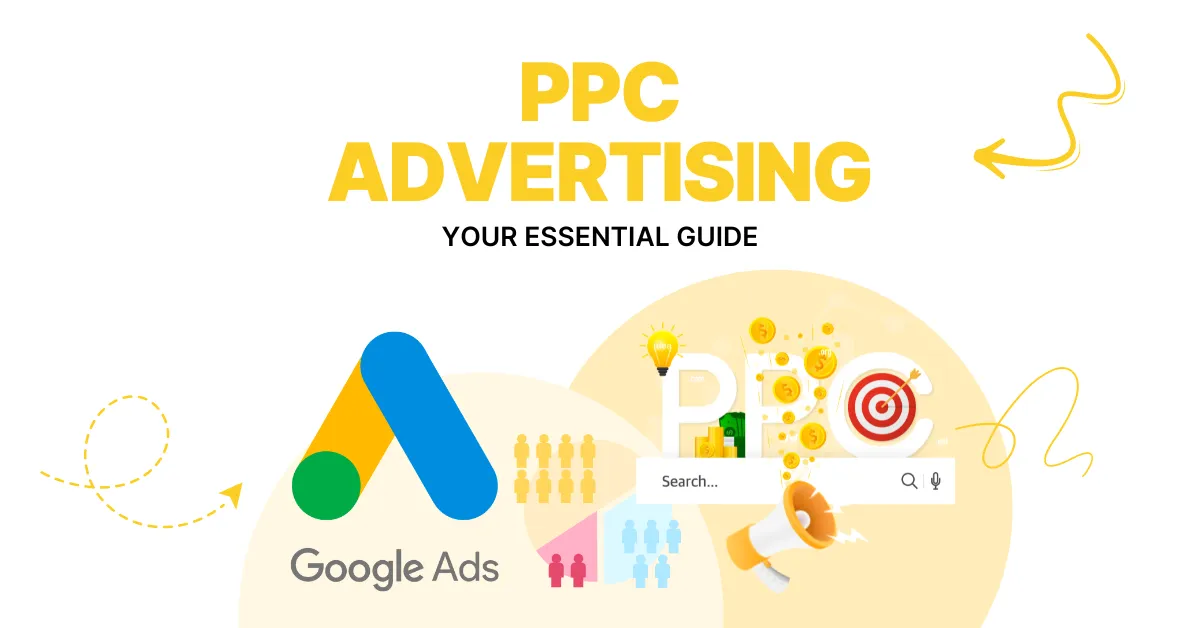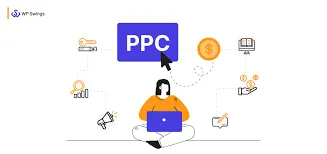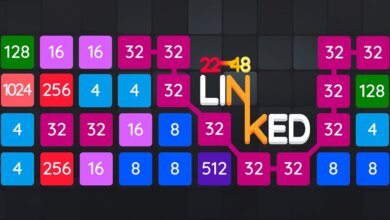Website PPC Advertising: How to Drive Instant Traffic & Boost Conversions

In today’s fast-paced digital landscape, businesses need more than just organic reach to stay competitive. If you’re looking for a way to instantly drive traffic to your website, increase visibility, and boost conversions, then Pay-Per-Click (PPC) advertising is the solution. PPC is one of the most powerful digital marketing tools for generating leads, sales, and brand awareness—fast.
This guide explains how website PPC advertising works, why it’s so effective, and how to optimize your campaigns for maximum return on investment (ROI).
What Is Website PPC Advertising?
PPC (Pay-Per-Click) advertising is a digital marketing model where you pay only when someone clicks your ad. These ads appear on platforms like Google Ads, Bing Ads, Facebook, Instagram, LinkedIn, and more, driving targeted traffic to your website.
PPC ads can take the form of:
- Search ads (on search engines like Google)
- Display ads (banners on websites)
- Shopping ads (for e-commerce)
- Video ads (e.g., on YouTube)
- Social media ads (on platforms like Facebook or LinkedIn)
Why Use PPC Advertising to Drive Website Traffic?
Here’s why PPC is a go-to strategy for marketers aiming for quick and measurable results:
🚀 Instant Visibility
PPC ads start showing as soon as your campaign goes live. Unlike SEO, which can take months to show results, PPC delivers traffic instantly.
🎯 Laser-Targeted Audience
You can target based on location, interests, device, search keywords, demographics, and behaviors, ensuring that your ads reach the right people at the right time.
📈 High Conversion Potential
With the right ad copy and landing page, PPC can turn traffic into leads or sales quickly, making it one of the most conversion-friendly strategies.
💡 Full Control Over Budget
PPC platforms allow you to set daily and monthly budgets, so you never overspend. You can pause or adjust your campaign at any time.
📊 Easy Performance Tracking
With tools like Google Ads dashboard, Facebook Ads Manager, and Google Analytics, you get real-time insights into impressions, clicks, conversions, and ROI.
Platforms for PPC Website Advertising
Different platforms offer different targeting and ad formats. Here are some of the top choices:
1. Google Ads
Best for: Search intent and high commercial keywords
Google Ads is the largest PPC platform and gives you access to:
- Search ads
- Display network
- Shopping ads
- YouTube video ads
2. Facebook & Instagram Ads
Best for: Brand awareness, retargeting, and visual engagement
Facebook and Instagram allow for:
- Precise interest and behavior targeting
- Retargeting website visitors
- A/B testing visuals and creatives
3. Microsoft (Bing) Ads
Best for: Lower competition and cost-per-click
Bing Ads still drives significant traffic and often comes with lower CPC rates compared to Google.
4. LinkedIn Ads
Best for: B2B companies targeting professionals and decision-makers
LinkedIn offers targeting based on:
- Job title
- Industry
- Company size
- Skills
How to Create an Effective PPC Campaign
To drive instant traffic and maximize conversions, follow this strategic PPC setup:
✅ 1. Define Clear Goals
What do you want from your PPC campaign? Goals may include:
- Driving traffic to a landing page
- Collecting email leads
- Boosting e-commerce sales
- Promoting a webinar or event
✅ 2. Perform Keyword Research
For search campaigns, choose high-intent keywords that match your offer. Use tools like:
- Google Keyword Planner
- Ubersuggest
- SEMrush
Look for a balance between search volume and competition.
✅ 3. Write Compelling Ad Copy
Your ad needs to stand out. Include:
- A clear headline
- Relevant keywords
- A unique value proposition
- A strong CTA (Call-to-Action), like “Buy Now,” “Get a Free Quote,” or “Download Free Guide”
✅ 4. Optimize Landing Pages
Make sure the page users land on is:
- Fast-loading
- Mobile-friendly
- Consistent with your ad messaging
- Designed to convert (with forms, offers, or buttons)
✅ 5. Set Budget & Bidding Strategy
Start small, monitor performance, and increase your budget based on ROI. Choose from bidding strategies like:
- Manual CPC
- Maximize Conversions
- Target ROAS (Return on Ad Spend)
✅ 6. Implement Conversion Tracking
Use tools like:
- Google Tag Manager
- Facebook Pixel
- Google Analytics Goals
Track actions like form submissions, purchases, or downloads to measure campaign success.
Tips to Boost Conversions from PPC Traffic
Driving traffic is only half the battle—you must also optimize for conversions:
1. Use Retargeting Ads
Target users who visited your site but didn’t convert. Retargeting can increase conversions by up to 70%.
2. Split Test Ad Copy and Creatives
Always run A/B tests on headlines, CTAs, and visuals to see what performs best.
3. Focus on Mobile Optimization
More than 60% of PPC clicks come from mobile devices. Ensure your site is responsive and easy to navigate.
4. Use Ad Extensions (Google Ads)
Include:
- Site links
- Call buttons
- Location info
- Promotions
These boost click-through rate (CTR) and improve ad rank.
5. Add Negative Keywords
Exclude irrelevant traffic by adding negative keywords (e.g., “free,” “cheap,” if your product is premium).
Common Mistakes to Avoid
- ❌ Sending users to your homepage instead of a targeted landing page
- ❌ Ignoring mobile users
- ❌ Setting and forgetting your campaigns
- ❌ Not tracking conversions
- ❌ Using broad match keywords without filters
Avoid these errors to maximize your ROI and reduce wasted spend.
Real-World Results: Why PPC Works
According to Google, businesses earn $2 for every $1 spent on Google Ads. Other studies show that PPC visitors are 50% more likely to make a purchase than organic visitors. That’s why PPC remains a top digital marketing strategy for both startups and large enterprises.
Final Thoughts
Website PPC advertising is one of the most efficient and powerful methods to drive instant traffic and boost conversions. With the right strategy—clear goals, compelling ad copy, optimized landing pages, and precise targeting—you can achieve measurable results quickly.
Whether you’re a small business looking to build visibility or an established brand aiming to scale up, PPC advertising can deliver the traffic and conversions you need—on your terms and budget.ppc advertisingppc advertising





